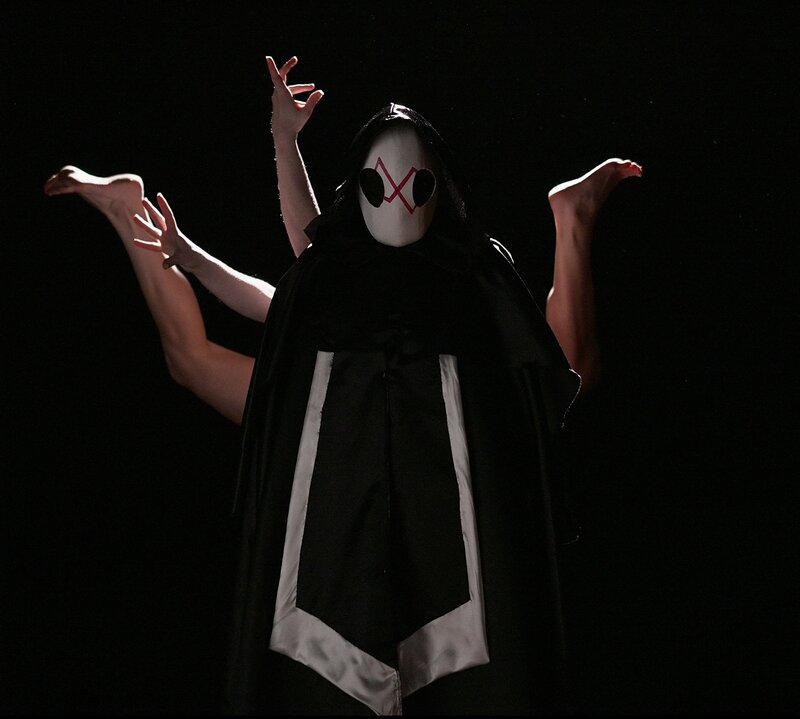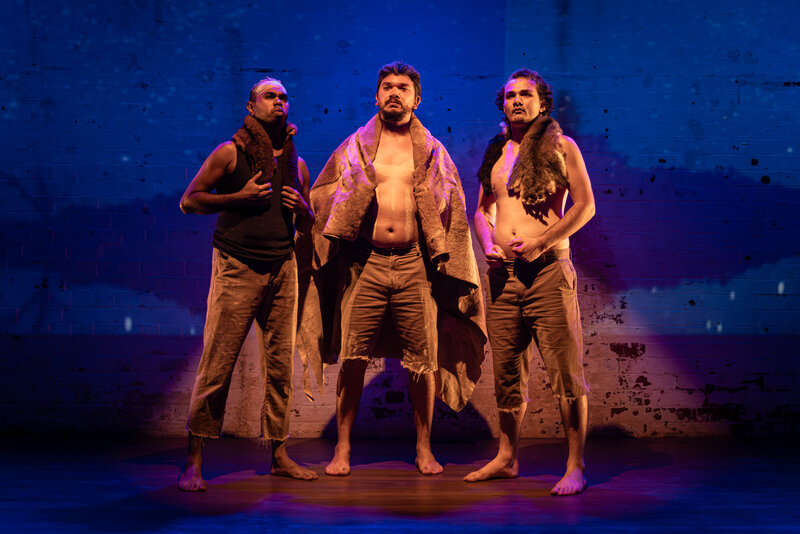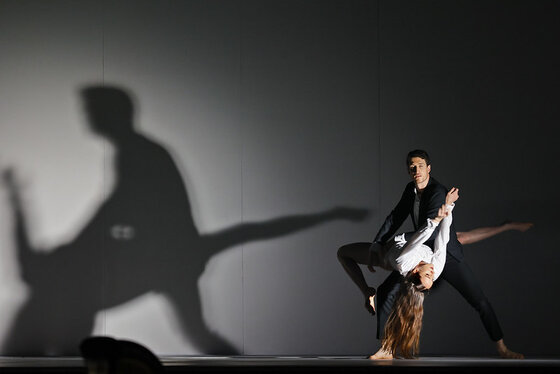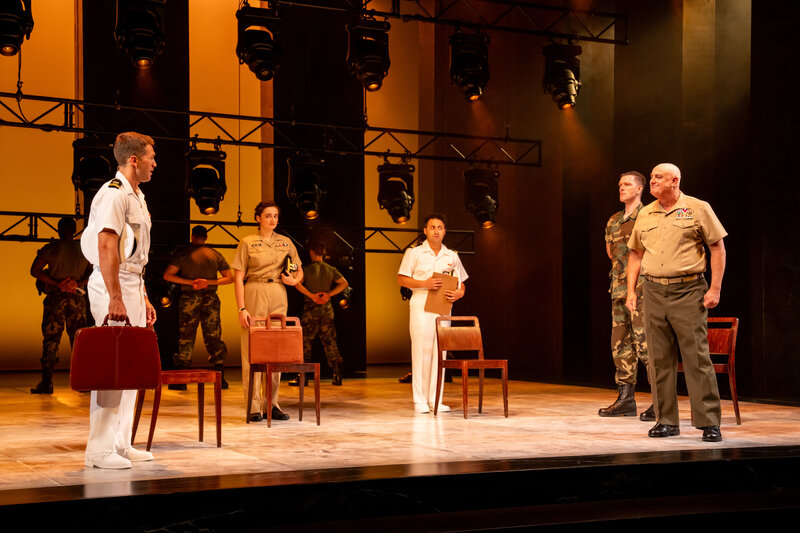Two, original, 35-minute works broken by a 20-minute interval, the first involves 22 dancers aged 10 to 17 (the youth artists) and the second 15 adults.
Youngsters in various formations – all dressed in parallel versions of white and black – run, leap, tumble and turn in Happily Ever After. A series of vignettes, the scenes are about the pursuit of love … about navigating connection and growth. The delight in the performers’ faces says it all. They are enthusiastic, talented and learning. Nothing holds them back. They give their all and the joie de vivre they bring to bear is evident throughout. You can’t help but admire their skill, flair, eagerness and excitement.

FAE is significantly darker. In short, it is striking, evocative and most exciting – a collaboration between the company’s founding director Benjamin Cure and composer Rosie Rai. Rae and Cure began with core aspects of the score. The worked together to build melodies from the notes F, A and E. They twisted and reversed them, ascribing them to certain events and characters within the story. Some of the music in the work is melodic, others – including sharp sounds – quite sinister and deliberately discordant. It works magnificently.
Dance, by its very nature, is interpretative, so here is my take on the narrative thread. A young woman (Caitlin Harvey) is trapped in an invisible cage, unable to extricate herself from negative thoughts and actions that have characterised her past. In her nightmare, she is plagued by apparitions that continue to hold her back. As she tries to flee, she inevitably returns to the darkness and the vicious cycle continues. She tortures herself, questioning whether she is good enough. Those overtures relate to past relationships that ended badly and to self-belief.

In a moment of clarity, she realises that she is her own worst enemy – her ideas, hopes and dreams are, indeed, worthy and with that comes freedom. Her epiphany manifests itself in the appearance of a figure in white, representing beauty and light. The costuming is superb (Daniel Ham and Benjamin Cure are responsible).
The lion’s share of the artistes (if you pardon the pun) are dressed in black. Eight ghostly figures, wearing blackened outfits top to toe, including hoods, start with their backs to us. When they turn, they reveal lashing of white, but most notably alien-looking face masks – white, with pink line markings between the eyes. They make such a statement … and just wait, because at one point they spread their arms while facing the audience to reveal “bat wings” and have impact anew.

All but one of the other dancers are also in black, with ribbons of pink – pink being an arresting colour contrast. In fact, layers of pink are also used to bind or “trap” our hero and other characters in the work. Luminous green, melding to black, is another colourway that predominates in various parts of the performance. It, too, is eye-catching and memorable. The lighting is critical to helping set the mood … to bringing out the layers and threads in the piece.
I thought FAE was mesmerising – highly creative and compelling – with genius elements. Happily Ever After and FAE is playing at Chapel Off Chapel until 3rd September, 2023.
Alex First
Other reviews you might enjoy:
- Don’t Go (Chapel Off Chapel) – dance review
- Songs for a New World (Chapel Off Chapel) – musical theatre review
- DanceX Part II (Arts Centre Melbourne) – dance review

Alex First is the editor of The Blurb. Alex is a Melbourne based journalist and communications specialist. He also contributes to The Blurb on film and theatre.





